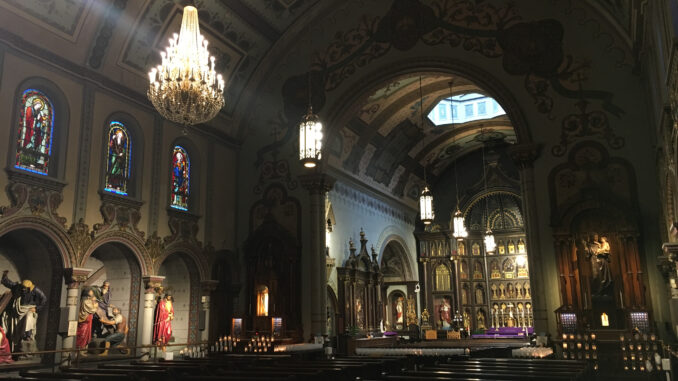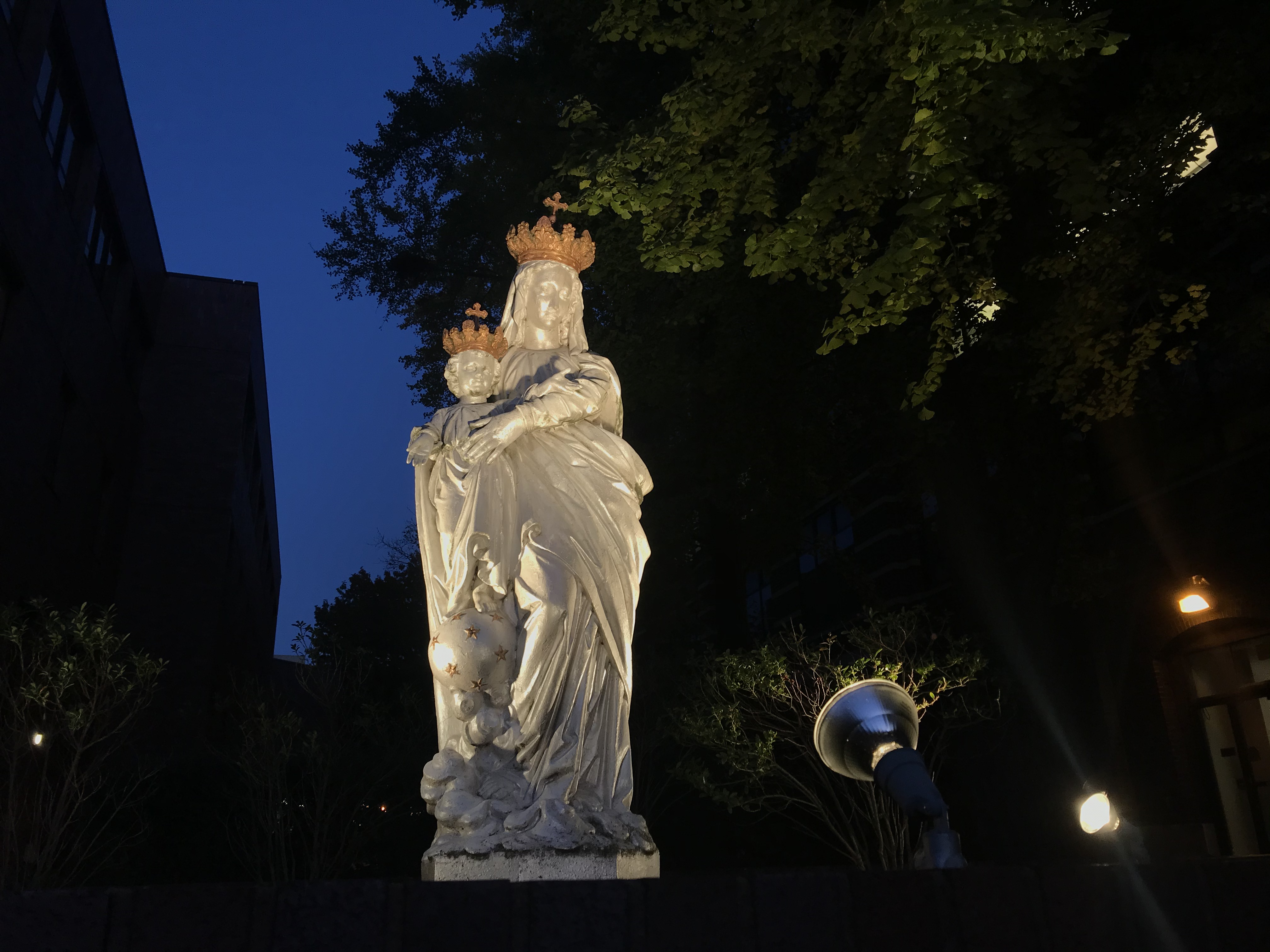
Mary Liz Flavin & Zoe Stratos | news editor & opinions editor
Oct. 28, 2021
Encased in a golden reliquary, Saint Anthony’s molar tooth sits surrounded by the relics of others devoted to the Catholic faith. The sunlight casts stained glass color upon pews flanked by life-size, hand-carved wooden Stations of the Cross.
Approaching the front, a piece of Mary’s veil can be found to the left, and at the center, an altar, with a sliver of wood from the table at the Last Supper, sits beneath the tabernacle.
All of these relics, and more, of saints and the Holy Family can be found in Pittsburgh’s hidden treasure: St. Anthony Chapel.
Located in Troy Hill, St. Anthony is home to over 5,000 relics, making the chapel one of the largest collections of relics in the world — second only ot the Vatican. This holy space pays tribute to those who have achieved sainthood on Nov. 1, All Saints’ Day — and every other day of the year.
According to the Rev. Bill Christy, university chaplain, the tradition of honoring the relics of the saints dates back to the first centuries of Christianity.
Churches in and around Rome were built over the catacombs where saints had died, later the bones of these saints would be venerated. People of the Catholic faith honor the bones and other artifacts as opposed to worship because they do not worship saints.
“You go to St. Anthony’s, and you see this place filled with relics. By placing yourself in this proximity to the saints, this becomes a tangible way of connecting with them and asking them to pray for you,” Christy said.
The founder of St. Anthony Chapel was Rev. Suitbert Mollinger from Europe. Mollinger spent his early adult years studying medicine in Naples, becoming a physician. He then realized his second calling, and he began preparing for priesthood in Ghent. All the while, the priest became interested in relics.
“It was a very chaotic time in Europe,” said Carole Brueckner, chairperson for St. Anthony Chapel. “One of the effects of the religious chaos was, many relics of the saints started to fall upon the open market. Father Suitbert Mollinger had a somewhat unusual hobby, in which he liked to acquire the relics of the saints.”
Brueckner also spoke of the readiness Mollinger had to expand his collection: “Many times [people] would write to Father informing him that if such a relic was available, would he be interested — he always responded yes. He also had agents throughout Europe looking for the relics, because, in essence, he was trying to rescue them from being destroyed.”
Shortly after beginning his studies for the priesthood, Mollinger traveled back and forth from the United States and Europe, while seeking out new relics.
On a trip back to Europe, Mollinger approached the church committee with a proposal to build a larger church where his relics could be housed. The committee voted against this proposal due to a lack of funding.
In 1880, he invested in building the chapel in the Troy Hill area of Pittsburgh to house the collection. The chapel was dedicated just three years later on June 13, the Feast of St. Anthony.
From there on out, Catholics from all over came to see Mollinger for spiritual and physical healing. He used relics to pray over the people and treated their illnesses through medicine.
“It’s like stepping into heaven for a little bit. You know that you are surrounded by so many saints [that] the Catholic Church says, are in heaven. It’s a very special thing. I’ve been doing this for many years and people come in and say the same thing. And they never knew it was there,” Brueckner said.
There are three classifications of relics: first, second and third — and St. Anthony has all three.
First-class relics are a piece of the saint’s body: hair, bones, teeth, etc. Second-class relics are something owned by a saint, such as a piece of clothing. Third-class relics are items touched by a saint, such as a broach or medallion.
People come to the church for many venerative reasons. They might come for the ancient relics organized and encased in custom reliquaries or for a private place to gather and worship. St. Anthony’s welcomes everyone —Catholic or not.
Gary DeLorenzo, 69, traveled from Monroeville to pray and give respects to those who came before at the chapel.
“We like the church,” DeLorenzo said. “The environment is solemn and you can sense real spirituality here. I think it’s important that people understand this history and what these saints have done so we can apply it to today.”
All Saints ‘Day is traditionally one of the holiest days in the Church. It is a day to celebrate the knowledge of saints and the countless men and women who led virtuous lives who are not known to us, according to Christy. He said it is good to remember who your personal saints are as well, the saints that you have known in your life.
“I think to bring it to the forefront of your brain and think of all those women and those men who did offer their lives to Christ, and were martyrs,” Brueckner said. “Some of them just lived an ordinary life, but still made God their focal point in life — that is very important. And we celebrate all the other different things: Fourth of July, Independence Day. Let’s remember our saints and what they have achieved in their lives.”
“For All Saints’ Day we just have our regular Masses to recognize the saints. It’s good to have the day off, if something is important it should be different.” Christy said. “It is nice to give students a day off to celebrate.”
Mass will be offered at Duquesne’s Chapel of the Holy Spirit at noon on All Saints’ Day. St. Anthony Chapel will hold Holy Mass on Monday, Nov. 1, at 8:30 a.m. The chapel is open for visitations and prayer from 12 p.m. – 3 p.m. Mon-Sat., including All Saints’ Day, and 12:30 – 3 every Sunday.




